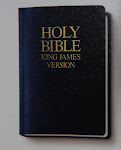We started at the Afton Historical Museum. There we saw the fireplace mantel that came from the home where Joseph Smith and Emma Hale were married.
This is the original home of Josiah Stowell (below) and now sits vacant. Josiah Stowell took Joseph as one of his hired hands to his farm where he was employed as a wool carder, farmer, and worker looking for a silver mine.
Joseph said that he was married to Emma Hale on January 1827 "while I was yet employed in the service of Mr. Stoal." (There are two know spellings of Josiah's last name, Stowell and Stoal.) After Joseph and Emma were married, the newlyweds were taken by Josiah to Joseph's parents home in Manchester, New York, (the Smith Family Farm) where they stayed from January to December 1827.
Although this home has been added onto since that time, this portion below is the original home of the Knight family. This house is also vacant. Eventually some 68 members of the Colesville Branch emigrated to Kirtland, Ohio and finally to Salt Lake City. Joseph Knight was of great assistance to Joseph Smith as he worked on the translation of the Book of Mormon, bringing him paper and much needed food.
We drove by the Colesville Town offices and saw this sign located near Harpursville, in Broome County, New York.
Last of all we arrived in Harmony, Pennsylvania (now called Oakland), which was the site of many significant events. The Aaronic Priesthood was restored here and Joseph Smith and Oliver Cowdery baptized each other in the Susquehanna River near this site.
Though we had often seen pictures of the monument for the restoration of the Aaronic Priesthood, it was wonderful to see it in person.
They lived in a small three room farm house on a 13 1/2 acre farm that they purchased from Emma's brother. The house burned down in 1918, but this sketch (below) was made from a photograph of the original home before it burned.
Emma's parents, Isaac and Elizabeth Hale, lived on a farm next to where Joseph and Emma settled. The sketch below is an artist's rendition of their home, the home where Emma grew up.
And below is the foundation of the Hale family home, that has recently been the site of some archaeological research.
Finally we walked down the slope to the Susquehanna River. This river is where Joseph and Oliver were baptized. We were impressed with the peace we felt as we approached the river near Joseph and Emma's farm.
Just the very next day we were excited to learn that the Church announced they will restore these sites in Harmony. To see this article go to the following link: Mormon Church Announces Historical Harmony Site.
A letter from the First Presidency, dated April 15, 2011 states, "We are pleased to announce plans to restore the site know in Church history as Harmony (now Susquehanna), Pennsylvania." Later in the letter is says, "The planned reconstruction of the historic buildings and farm setting at Harmony will include construction of monuments commemorating the restoration of the priesthood."







































.jpg)

